That was the case in November 2018 when Michelle Leone shared photos of her heating system in the discussion forum on HeatingHelp.com. A few months earlier, Michelle Leone purchased a charming Connecticut bungalow that was built in 1912. Since winter was right around the bend, she invested in a new boiler installation for her steam-heating system. Banging and clanging pipes, however, soon dashed her new-homeowner excitement. Leone came to HeatingHelp.com and posted, “Please help…Not sure where to go from here. If I had the money I would definitely get someone else in here to make it right. Unfortunately, I’m on a tight budget.”
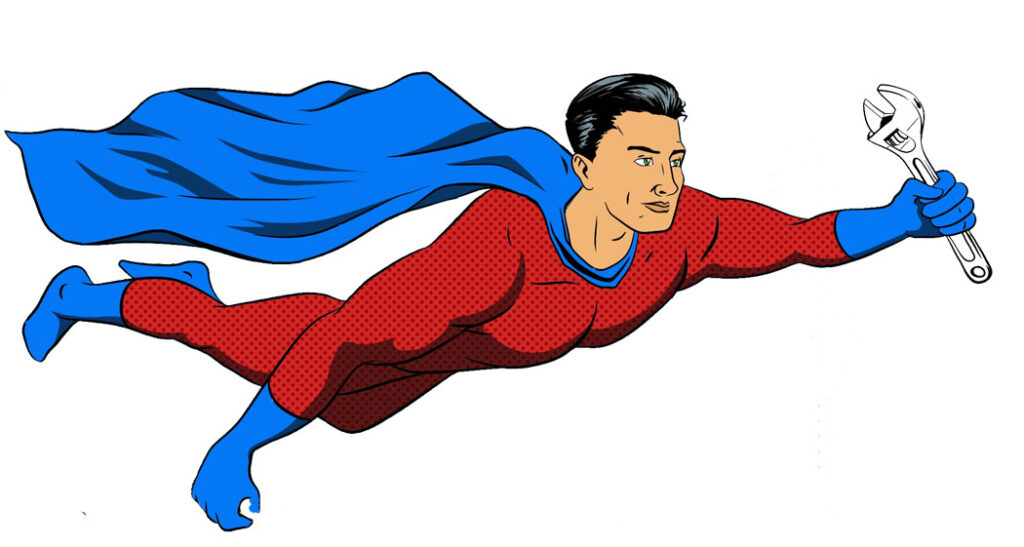
Forum members began offering advice and then Peter Owens of SteamIQ had an idea. “If anyone else in MA/RI wants to get a work party to help out Michelle, I’m happy to donate my labor,” he posted. The holidays were approaching and it was the midst of heating season, but one after another, forum members offered to help by volunteering labor or supplying parts for the job. They planned to begin work on December 14 and by the time that date arrived, a Steam Dream Team had come together to generously donate their time and talent to get the job done.
The team included Peter Owens (SteamIQ, MA), Bob Boan and Bobby Gates (Bob’s Heating, Cooling, and Electric, VA), Ezzy Travis (E. Travis Mechanical, NJ), Jamie Hall (Registered Civil Engineer, CT), Paul E. Charczuk (North Fork Refrigeration Services, NY) and Ryan Donoghue (MA). Forum members and companies, including SupplyHouse.com, R.I.S Wood Heat, Barnes & Jones, F.W. Webb, SUNTEC Pumps, SPX FLOW, Westwood Products, Watts, W.P. Haney Co. and Bolt Depot, contributed money and parts. In total, over $3,000 worth of products were sent to the jobsite.
Most members of the Steam Team had never met in person, but they have been sharing their knowledge with one another on HeatingHelp.com for years. “We have such a great knowledge on Heating Help of how things should be done. And I thought it would be a great opportunity to showcase the skills from some of these contractors,” Owens said.
Boan and Gates made the trip all the way from Virginia. Boan added, “I have learned over my lifetime that you get more than you give and I have found the group on Heating Help to be some of the most helpful people I’ve seen.”
They had a big job ahead of them. All of the piping was incorrect, so they ripped it out and started over. Over the next two days, they worked on everything from the mains to the branches to the near-boiler piping. At the end of the two-day project, Owens posted on the forum, “Hands are tired, back is tired, feet are tired, but heart is happy.”
Leone was overwhelmed by their kindness. “It’s amazing,” she said, shaking her head. “I still can’t wrap my head around it.” She later added on the forum, “Steam is a beautiful thing when it’s done right and these guys certainly know how to do that.”
When people sign up for the discussion forum on HeatingHelp.com, they’re asked to take what they need and leave what they can. This often goes beyond generously answering questions. Time and again, community members have stepped up to help those in need.
Here’s to the Steam Dream Team and all of the HVAC heroes who warm homes and hearts. ICM
In the May/June, 2018 issue of ICM, I wrote about using a valve configuration similar to what is used on commercial hydronic systems to facilitate checking the charge on these tanks and to perhaps extend their useable life. In my hurried rush to get this article completed—yes, I installed the isolation, boiler drain valves, tank and took photos while on a service call to repair a water leak on the day of deadline!
What a coincidence, a waterlogged diaphragm tank, with an active leak from the relief valve giving me another metal balloon to add to the dumpster!
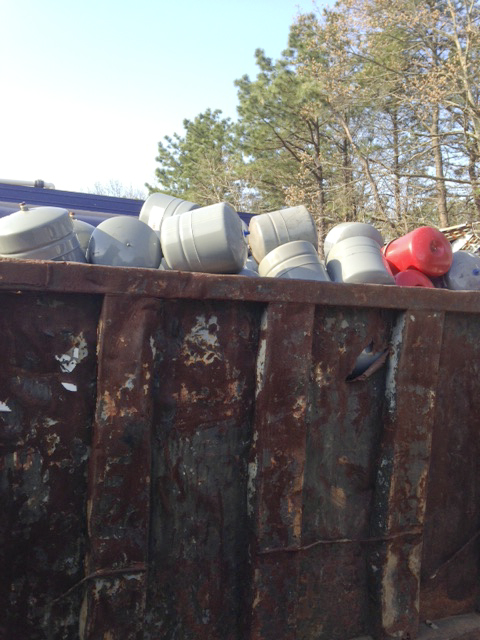
A waterlogged diaphragm tank, with an active leak from the relief valve, gave the author another metal balloon to add to the dumpster.
The following day, while looking at the pics I submitted, I realized that the feed valve and backflow on this heating system were incorrectly installed! OOPS!!! The boiler feed valve installed in this manner would never sense a drop in system pressure with the backflow preventer piped downstream of the feeder.
Many noticed this. Glad to see so many professionals out there paying attention!
The following day, I was in the supply house picking up parts for a system repipe and noticed some nice combination isolation/drain valves they stock in many sizes, (except ½”). So I go over to the counter guy, and ask if they make this combination valve in ½”. Well, he shows me that not only is it available in ½”, but they even make a ½” expansion tank service valve: Webstone part # 41672. This is the Webstone valve I would use on all new installs.
Webstone Part #40612: this is the valve I would use on all existing tank replacements.
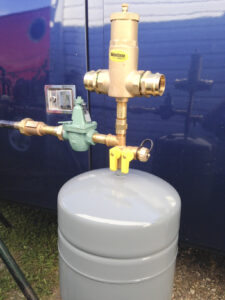
This is a half inch expansion tank service valve.
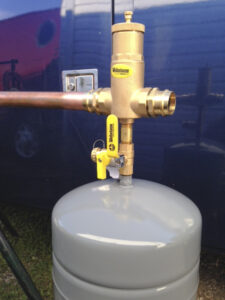
Use the Webstone Part No. 40612 valve on al
existing tank replacements
For some reason, none of the supply houses in my area are stocking these 1/2″ valves at this time. I had these ordered in. I hope that I will start seeing these in stock soon (hint, hint).
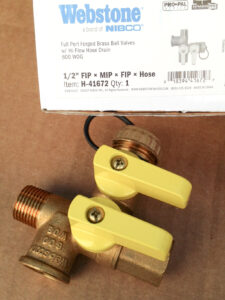
Use the Webstone part No. 41672 on new installs.
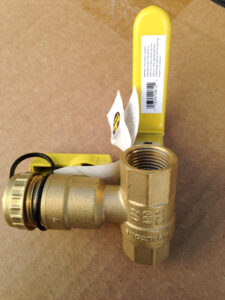
Use the Webstone Part No. 40612 valve on all existing tank replacements.
I feel these valves would be a great addition to truck stock, and if utilized during a failed tank replacement, or added during a new system installation, will be very beneficial in checking the tank charge during annual maintenance or during hydronic component repairs.
Stay safe, Wayne ICM
Each week, when I head into the depot for my weekly truck stock replenishment, the sight of the multi-colored steel balloon bouquet rising over the sides of the very large scrap steel dumpster aggravates me. There is much lost revenue for the service department in there!
In addition to thinking about all the bling I could purchase with that money for my Road King, Jeep and dirt bikes, I also think about how much extra education the service budget could afford if that bouquet of tank growth could be slowed. It seems that the service life of these tanks, both hydronic and potable, is much shorter than it used to be.
I had been thinking there has to be a way to extend the service life of these tanks. Perhaps just being able to perform a simple check of a tank’s condition while on a service visit as a proactive measure could lessen the possibility of a reactive damage claim with the additional water parts (feed valve, relief valve, auto vents) and potential liability drama it brings.
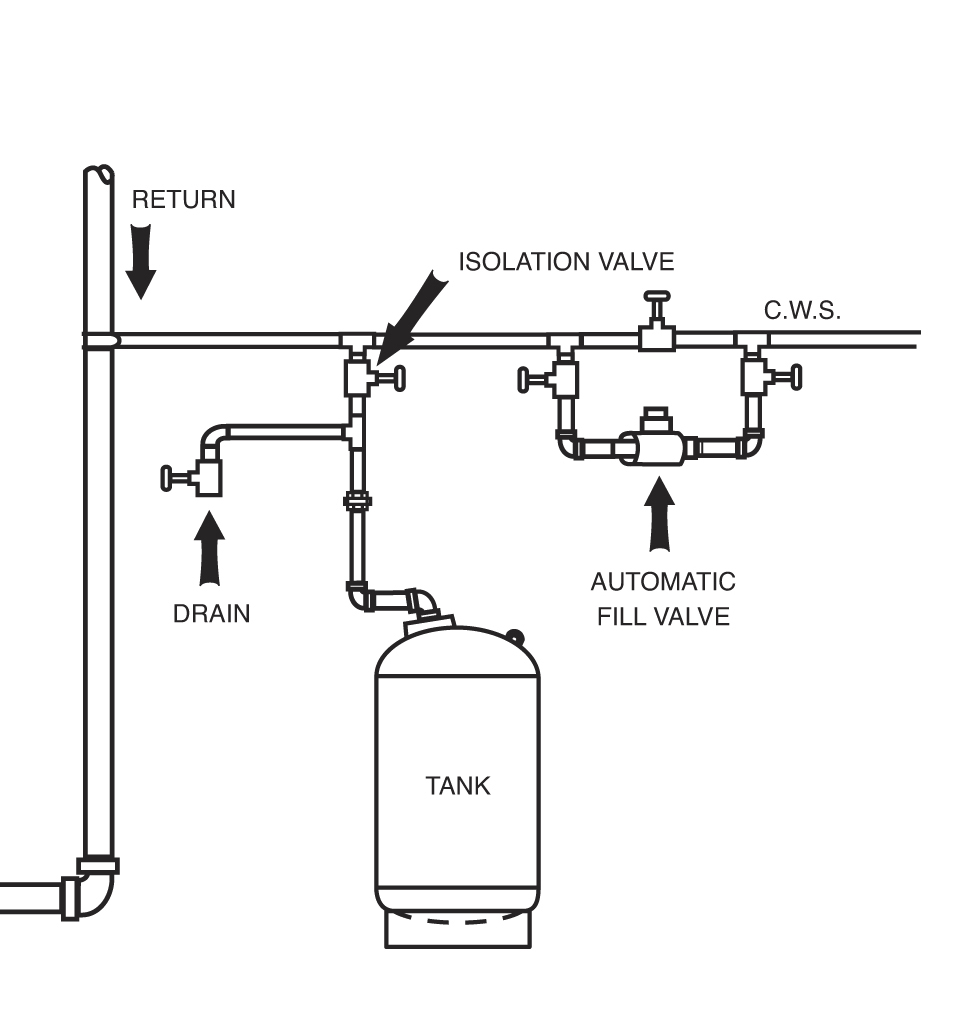
Figure 1
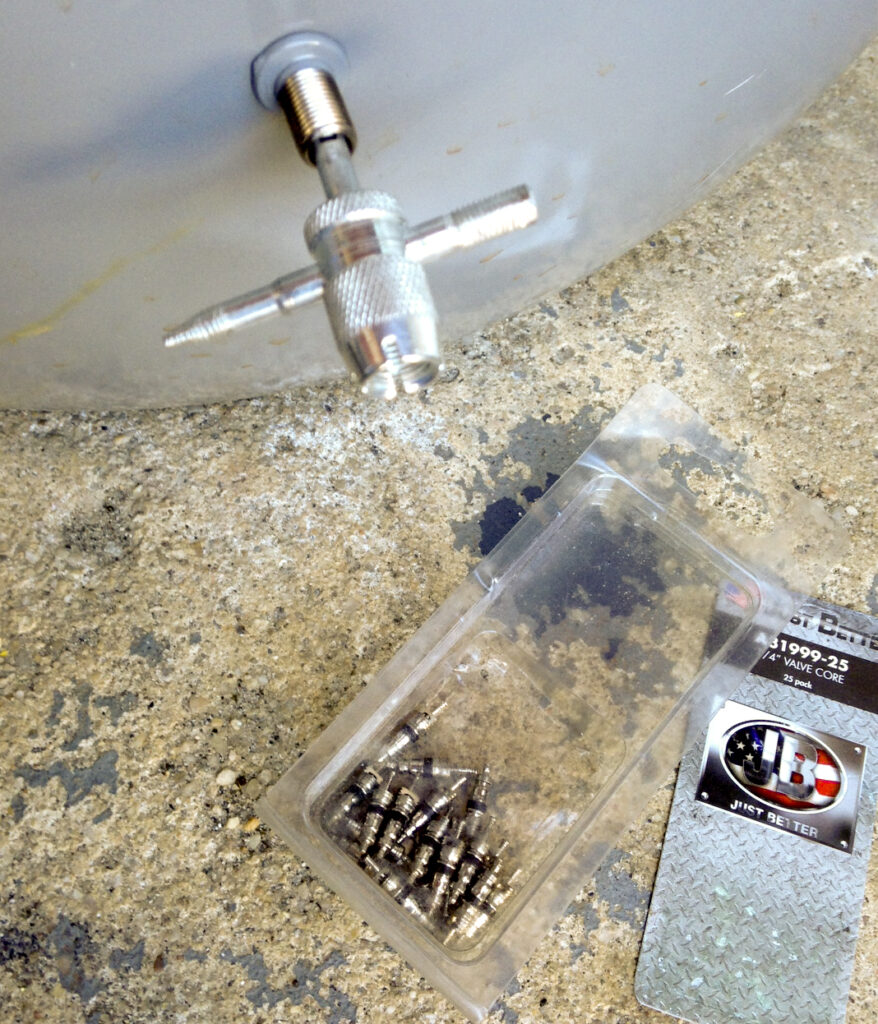
Figure 2
One of the guys I work with had become so upset in seeing this bouquet grow larger, he actually called one of the tank manufacturers and accused them of shipping the tanks with no air charge! It appears that the pressure gauge his great grandfather had passed to his grandfather, then passed to his father, and now on to him, had somehow stopped working, causing him to think that all three tanks on his truck—new in the box—were not pressurized!
I would have checked the gauge on one of my service truck tires (this story stays in my comedy routine)!
A few years back, I took notice of how commercial diaphragm expansion tanks are piped. (Insert Figure #1 here) The simple addition of an isolation valve and drain can be added to every residential tank installation and replacement. I remembered how easy this check can be when I was called to inspect a water leak at one of the apartment complexes we have a service contract with. This boiler had been shut down to repair a slab leak and the system refilled, purged and restarted. With the apartment complex’s maintenance man standing next to the 50 psi, 1-1/4″, 1,000,000 btu relief valve, it suddenly discharged! The relief valve was properly installed and piped with a drain pipe pointed towards the floor. Fortunately there were no injuries, he just had his reflexes tested!
This diaphragm expansion tank was a standing floor model. It was piped with an isolation ball valve and had a drain. I closed the isolation valve, drained off the pressure in the tank, checked the pressure and found it only had 5psi charge pressure. I replaced the valve core and pressurized the tank to match the system’s fill pressure, which was set to 20 psi.
I recently visited that apartment building, checked the tank pressure and found it had again dropped 2psi in a year. With the addition of an isolation valve and a drain, this check can be done during routine maintenance, without dropping the entire system pressure, and the tank can be easily recharged. When I replaced the #15 diaphragm expansion tank on my boiler in October 2012, I added a ½” IPS ball valve, ½” close nipple, ½” tee and a ½” boiler drain upstream of the tank. On my system, I’ve found the tank has lost about 1psi a year. Each year during routine maintenance, the isolation valve gets closed, a hose is connected to the boiler drain installed at the diaphragm expansion tank and the pressure is relieved.
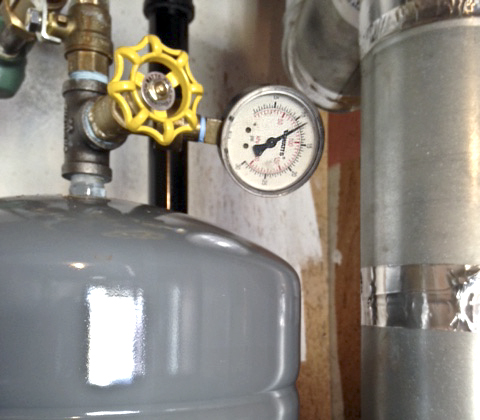
Figure 3
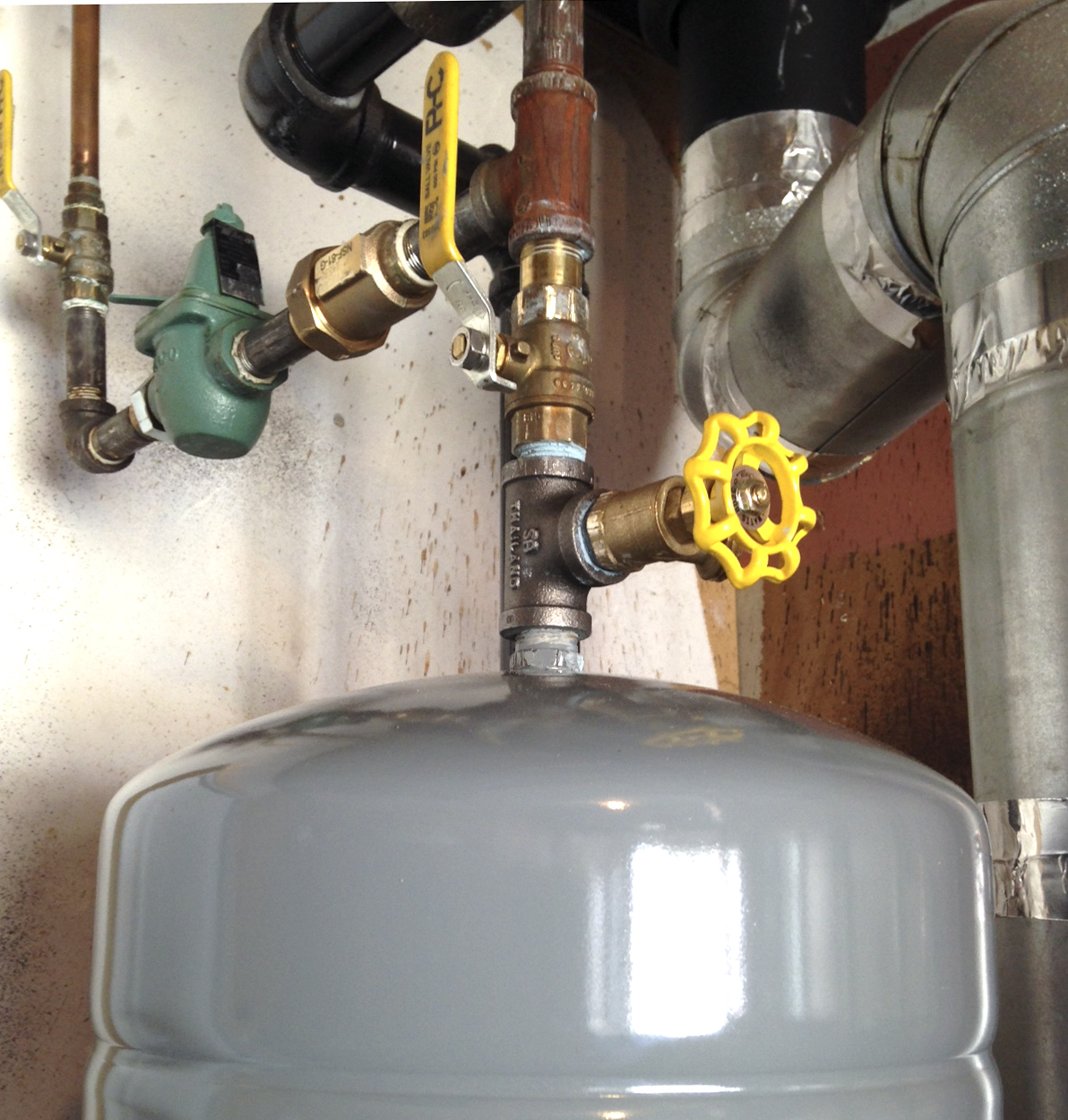
Figure 4
The tank charge can now be checked. If the tank still shows a charge, the diaphragm is good and the tank can be pressurized. So far, so good after 5+ years on this tank, feeder, relief valve and auto vent. Many of the tanks in that scrap steel dumpster didn’t last that long.
Recently, I was on a call for a water leak and had the opportunity to add these extra fittings after checking and finding that this tank had lost some of its charge. The valve core was replaced (Figure #2), the tank was charged to 12 psi (Figure #3) and reinstalled with isolation valve and drain (Figure #4).
Remember basic hydronic rules: 1psi lifts water 2.31′, which equals 28″. Hydronic tanks need to be pressurized to match system fill pressure and domestic water tanks need to be pressurized to match incoming street pressure.
Stay safe, Wayne
ICM
Wayne Lawrence is an instructor for Oilheat Comfort Corp. oilheatcomfortcorp.com









